In the industrial flooring sector, specifying a floor that truly delivers long-term performance means going beyond “just polished concrete”. At BECOSAN®, our mechanically polished concrete system uses high-precision diamond grinding, chemical densification and breathable sealing — not simply a surface coating. This results in a dust-free, high-durability floor engineered for dry warehouses, logistics hubs, vehicle assembly plants and similar industrial applications across the UK.
Mechanically polished UK
Mechanical polishing is a process where the uppermost layer of a concrete slab is refined by diamond-bond tools in progressive steps: grind → hone → polish → densify → seal. The technique targets the concrete matrix itself — increasing surface hardness and gloss while maintaining breathability and structural integrity.
Unlike standard ‘grind & seal’ or mere coatings, mechanical polishing exposes aggregate, closes the surface pores, and produces a floor optimized for heavy vehicular traffic, minimal dust, and low maintenance.
Why it matters for industrial dry areas
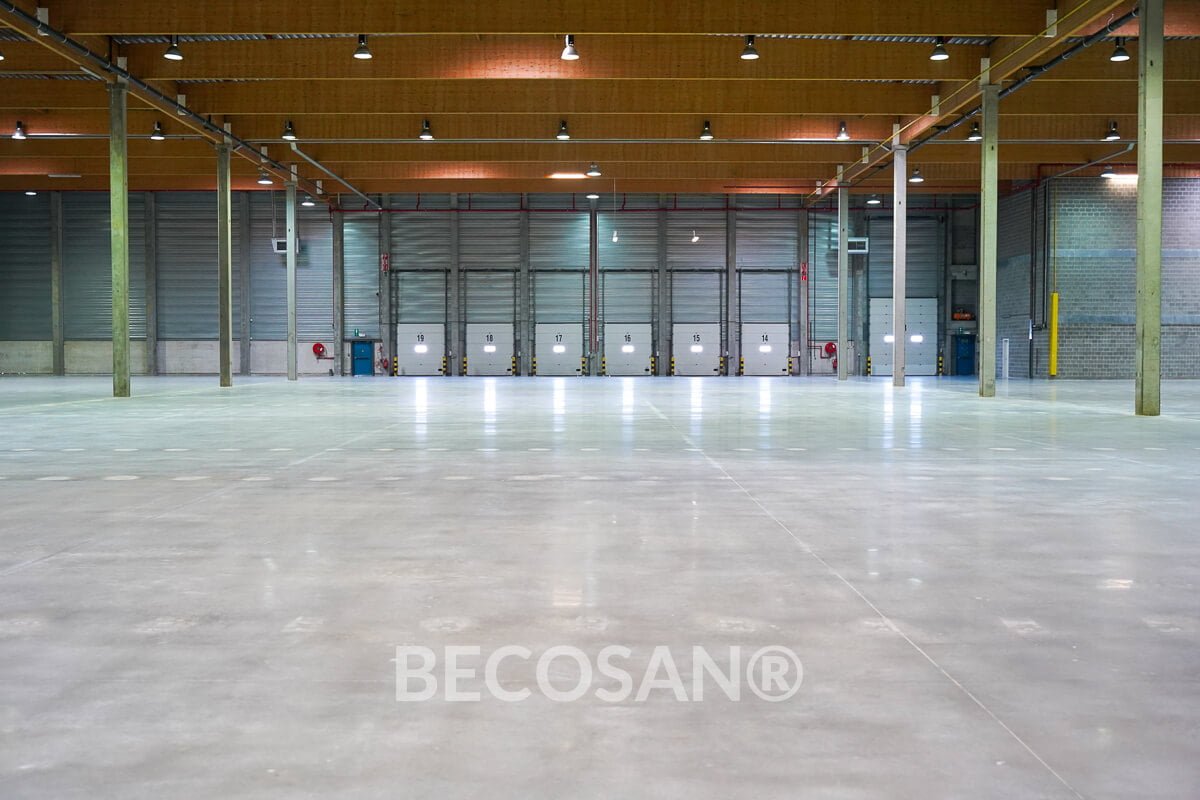
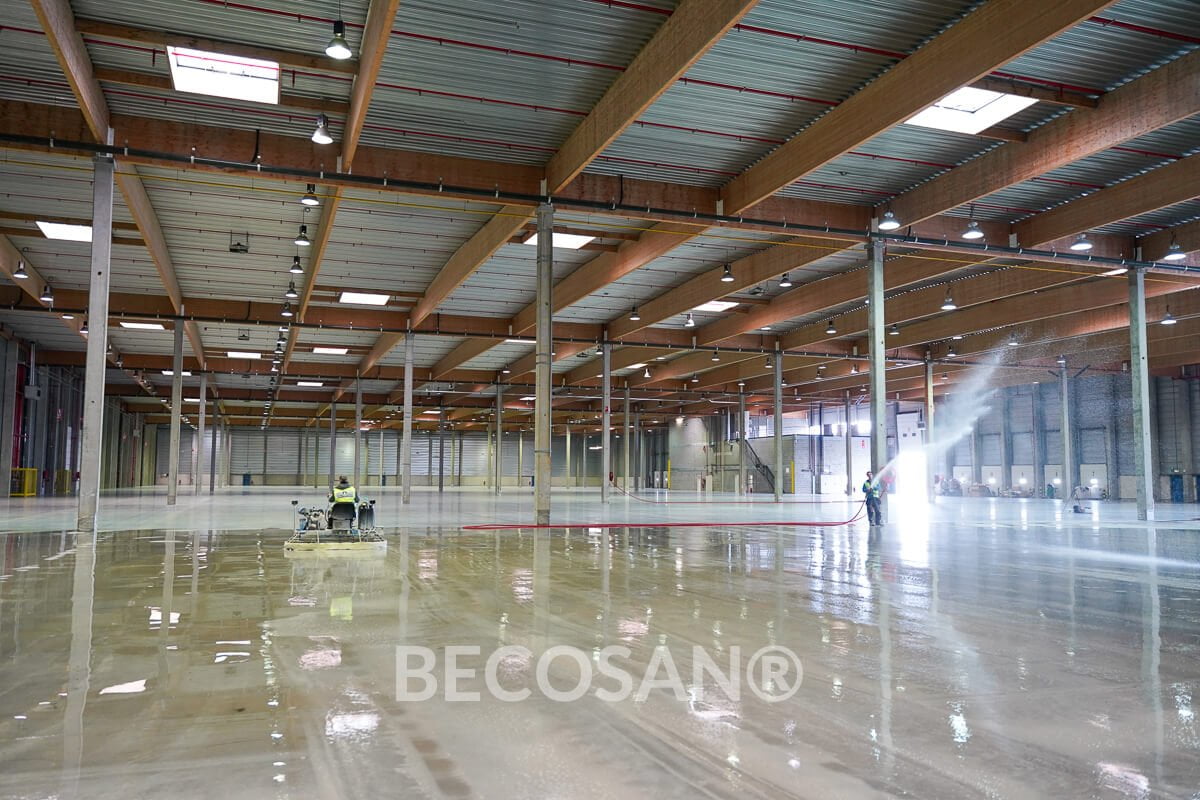
Mechanically polished concrete differs from coated or decorative polished floors in every key aspect — from the way the surface is created to how it performs and ages.
Every BECOSAN® mechanically polished floor follows a precise, fully mechanical process designed to transform ordinary concrete into a dense, dust-free and durable industrial surface.
Unlike coatings or superficial polishing, each phase of the system acts directly on the concrete matrix, strengthening it from within and ensuring consistent long-term performance.
The process is executed by our trained UK teams using high-performance diamond equipment and verified through on-site quality control.
Our UK team carry out a site survey including flatness, slab strength, vapour emission, joint layout. Slabs below required hardness may require repair or topping.
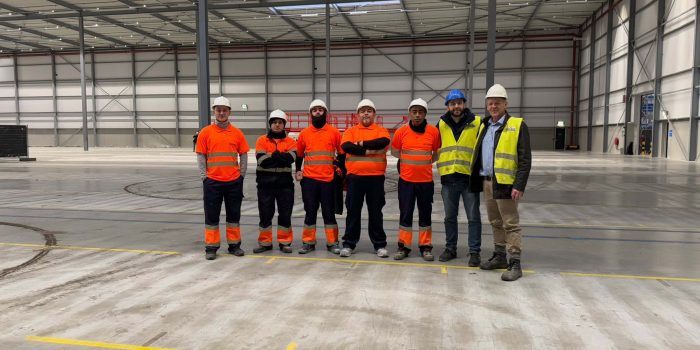
Remove contaminants, grinding where necessary, fill cracks or honeycombing, ensure floor is ready for mechanical polishing.
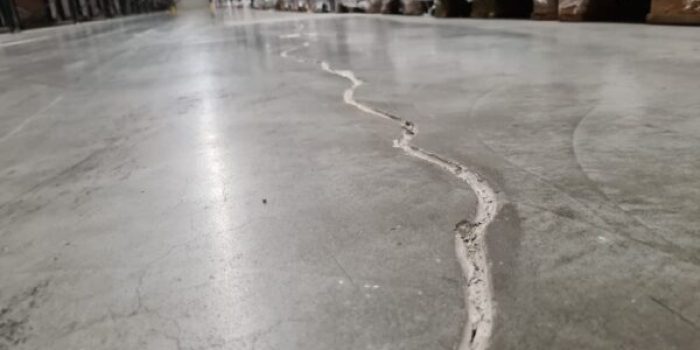
Using metal-bond diamond tools we remove the surface paste to reveal the aggregate or prepare the finish required.
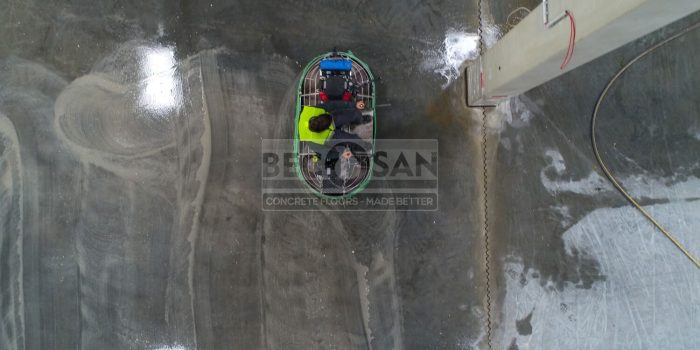
A penetrating silicate or lithium densifier is applied to reinforce the slab from within, reducing porosity and increasing surface hardness.
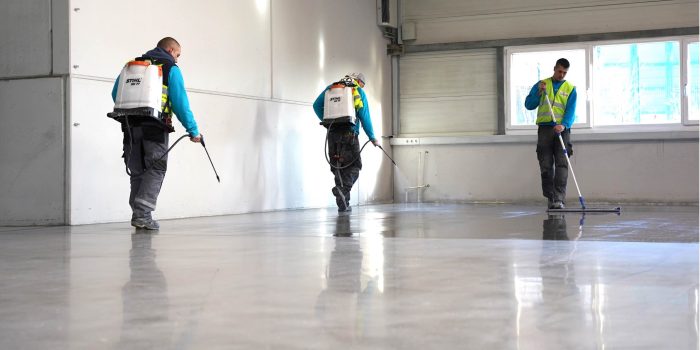
We refine the surface with increasingly fine diamond abrasive pads, depending on the exposure level and gloss required.
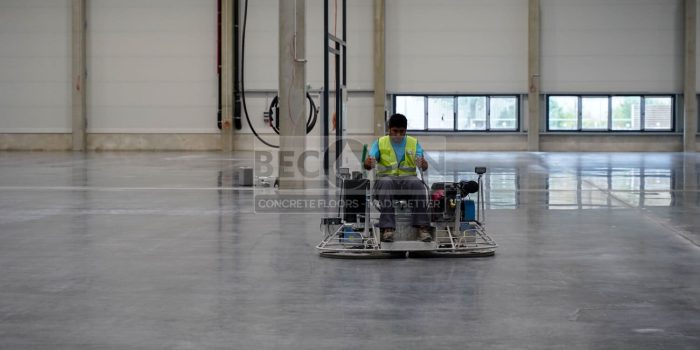
A breathable, industrial-grade sealer is applied, not acting as a wear layer but enhancing stain resistance while preserving the concrete integrity.
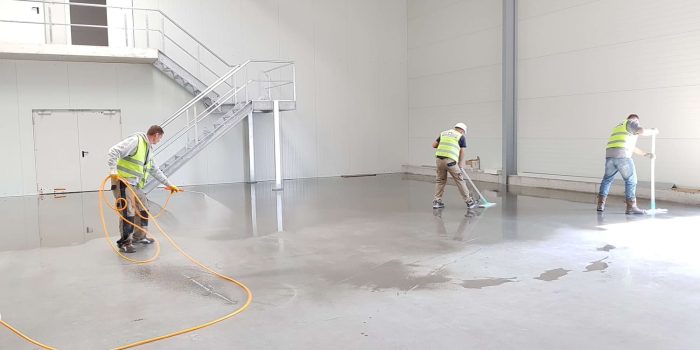
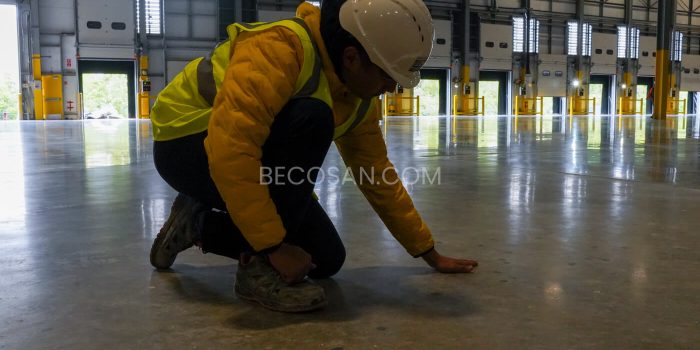
Every BECOSAN® mechanically polished floor is defined by two parameters:
the level of aggregate exposure and the level of gloss.
Both are controlled by the mechanical process — no coatings, no waxes, no topical layers.
The exposure level is determined during the early grinding stages, when the upper cement paste is removed to the desired depth.
Medium exposure revealing fine aggregate particles. It offers a uniform industrial look and high wear resistance, making it the most common choice for warehouses and logistics facilities.
Deep grinding exposes the coarse aggregate fully. It provides the maximum mechanical strength and slip resistance required in heavy-duty industrial areas.
Once the desired exposure is established, the floor is progressively refined with finer diamond abrasives.
Each additional polishing pass increases smoothness and reflectivity.
Low sheen, purely functional, ideal for high-traffic production areas.
Balanced gloss level, combining reflectivity with traction, suited for logistics and manufacturing floors
Mirror-like finish for automotive, retail or showroom environments.
When it comes to flooring solutions, mechanically polished concrete stands out for its unmatched benefits. Here’s why businesses across the UK trust BECOSAN® for their flooring needs:
The mechanical process increases abrasion resistance relative to untreated slab or standard coating systems.
Mechanically polished concrete does not generate dust because the surface paste is removed and the concrete pores are sealed. The floor remains clean and stable, preventing airborne dust typical of untreated slabs.
Even at higher gloss, performance in dry-traffic conditions remains within safe thresholds; we can supply third-party slip test data.
Compared to coated floors needing re-application every few years, BECOSAN’s system offers lower total cost of ownership — an important metric for facility managers.
As a mineral-based floor, no VOC heavy coatings are required; long lifecycle and reuse potential align with modern sustainability criteria.
Here, we provide answers to frequently asked questions about our mechanically polished concrete floor service.
Mechanical polishing involves diamond-refinement of the slab itself, densification and breathable sealing. Standard polished floors may use coatings or superficial polishing and don’t always deliver industrial-grade durability.
Yes, provided the slab meets key criteria: sufficient strength (C35 or higher typically), minimal damage, levelness and vapour emissions within allowable limits. We assess on-site to confirm viability.
Routine cleaning with neutral pH detergents, use of properly maintained pads/machines, doormats at entry points. We provide a tailored maintenance plan.
Our standard specification is for dry industrial zones. If wash-down, heavy moisture or cold-store conditions apply, a bespoke specification is needed — contact us for assessment.
Our UK survey covers scheduling. For e.g. phased works in large slabs allow continued operations in neighbouring zones, and we plan logistics with you to minimise disruption.
Meet our team, the leading figures for our projects.

You’ll have direct contact, and he will ensure everything runs seamlessly.

He will lead, coordinate, and oversee the daily activities of the group, ensuring objectives are met.

He will engage directly with you, offering the best solutions and addressing key elements of the project.


Contact us today for a free site survey and quotation — our UK operations team will assess your slab, discuss your finish requirements and provide a tailored solution.